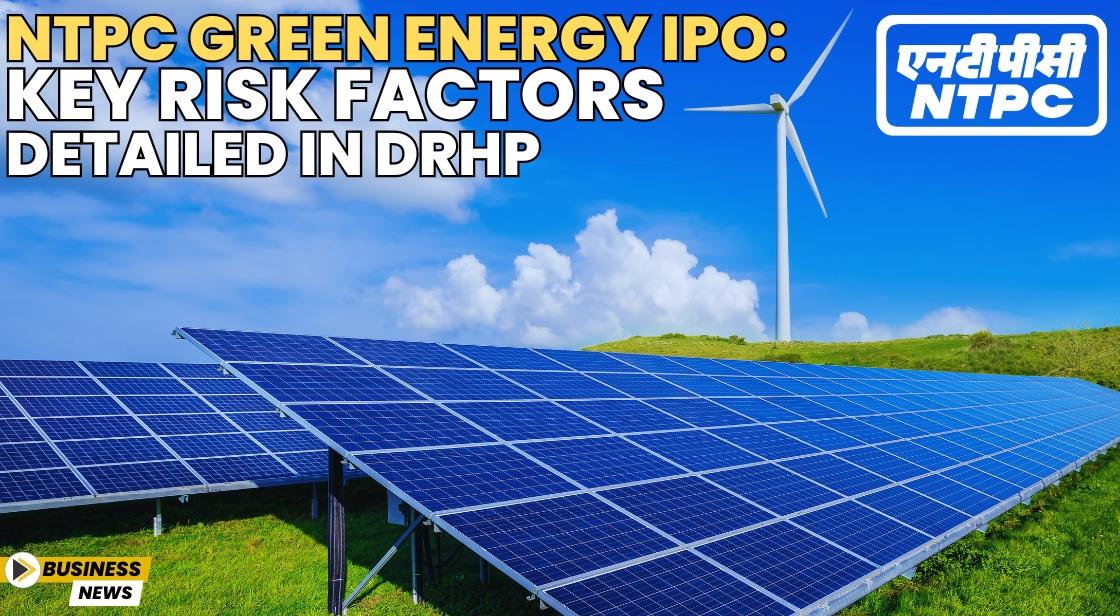NTPC Green Energy IPO: Key Risk Factors Detailed in DRHP

News Synopsis
NTPC Green Energy, a subsidiary of NTPC Ltd., has filed draft papers for a ₹10,000 crore initial public offering (IPO) on Wednesday. The IPO will involve only the issuance of new shares, with existing shareholders not selling any stake, as outlined in the Draft Red Herring Prospectus (DRHP).
Revenue Concentration Risks
A significant risk highlighted in the DRHP is the company's revenue concentration. NTPC Green Energy generates over 87% of its revenue from its top five offtakers, with the largest offtaker contributing around 50% of revenue from operations in FY24. A loss of any of these key customers or a deterioration in their financial health could adversely impact NTPC Green Energy’s business operations. The company plans to continue relying heavily on these top nine offtakers for a major portion of its revenue throughout FY25.
Dependence on Third-Party Suppliers
NTPC Green Energy's business and profitability are heavily dependent on the availability and cost of materials, components, and equipment provided by third-party suppliers. Currently, the company does not have long-term supply contracts in place, although it may consider entering into such agreements for critical components like solar modules, wind turbine generators, and battery energy storage systems in the future.
Regional Operational Risks
The company’s renewable energy projects are predominantly located in Rajasthan. This concentration poses a risk, as any significant social, political, economic, or seasonal disruptions, natural calamities, or civil unrest in the region could impact the company’s operations and business continuity.
Power Purchase Agreement (PPA) Risks
NTPC Green Energy faces risks associated with Power Purchase Agreements (PPAs). Revenue from operations is subject to fixed tariffs, and changes in tariff regulations or structuring could affect the company's financial performance. Currently, 96% of the company's revenue is derived from renewable energy sales, making profitability highly dependent on effective cost management under these PPAs.
Competitive Landscape
The company operates in a highly competitive market, facing significant competition from both traditional and renewable energy companies. Failure to effectively respond to market changes and innovations in the renewable energy sector could adversely affect NTPC Green Energy’s market position and business performance.
Receivables and Expense Risks
NTPC Green Energy could face challenges related to receivables, particularly if there are delays or difficulties in collecting payments from utility offtakers. Additionally, in-house procurement operations for solar projects introduce risks such as unexpected expenses if suppliers default on warranty obligations. Other potential issues include increases in land, labor, equipment, and material costs, inaccuracies in technical drawings, delays in equipment delivery, and adverse weather conditions impacting project timelines and costs.
Capital Expenditure Requirements
The renewable energy sector is capital-intensive, requiring substantial investment to develop new projects and expand into emerging areas like green hydrogen, green chemicals, and energy storage systems. Adequate capital is essential for sustaining business growth and pursuing diversification strategies.
Climatic and Environmental Conditions
Electricity generation from solar and wind sources is highly dependent on favorable meteorological and climatic conditions. Unfavorable weather can significantly impact operational performance. Additionally, the physical conditions surrounding wind turbine generators and solar farms may affect their efficiency and output.
Credit and Performance Risks
NTPC Green Energy is subject to credit and performance risks associated with its suppliers and contractors. The company's ability to meet its financial obligations and maintain good performance standards is crucial for its business stability and growth.
Import Restrictions
Restrictions on the import of solar equipment, wind turbine generators, and other critical components could affect the price or availability of these items, potentially increasing business costs and impacting project feasibility.
Diversification and Expansion Risks
NTPC Green Energy plans to diversify its renewable energy project portfolio by exploring new areas such as green hydrogen, green chemicals, and energy storage systems. However, these ventures involve complex, time-consuming, and costly processes, accompanied by a high degree of business risk.
Recent Share Issuances and Debt
The company has issued equity shares in the last 12 months at prices that may not reflect the upcoming IPO issue price. Additionally, NTPC Green Energy has substantial debt, with outstanding borrowings of ₹15,277 crore as of June 30, 2024. Inability to comply with repayment terms and other covenants could adversely impact the business.
You May Like









